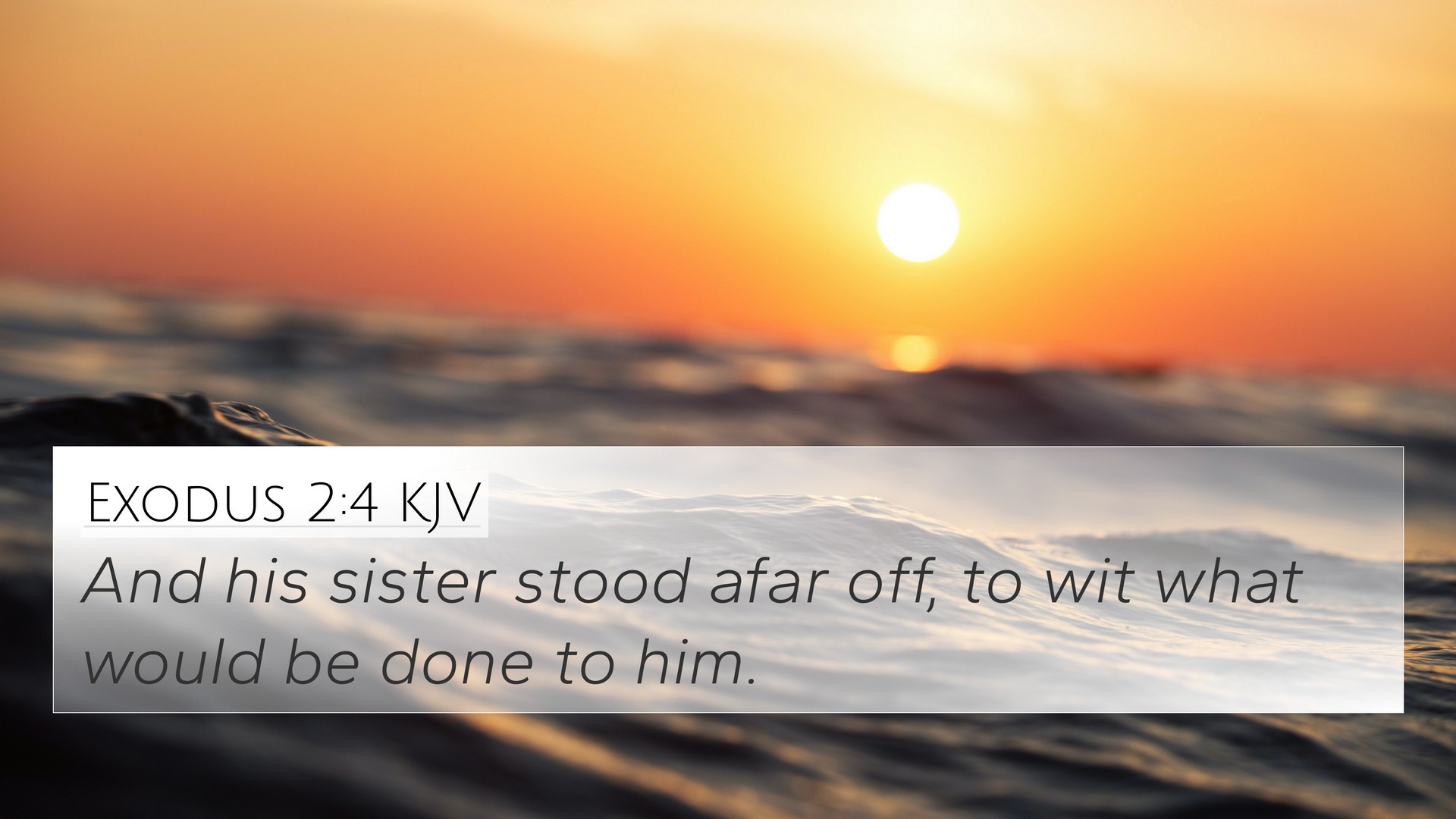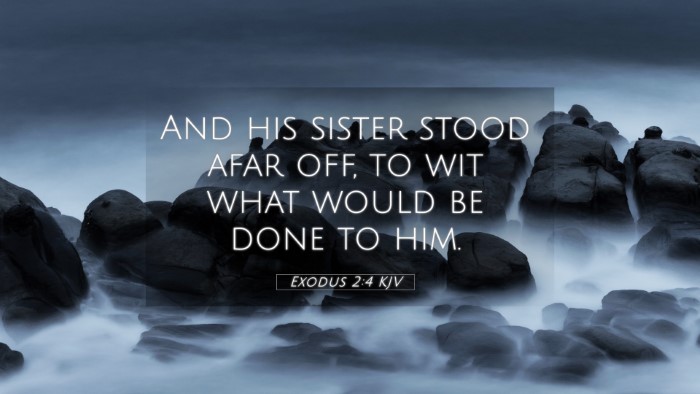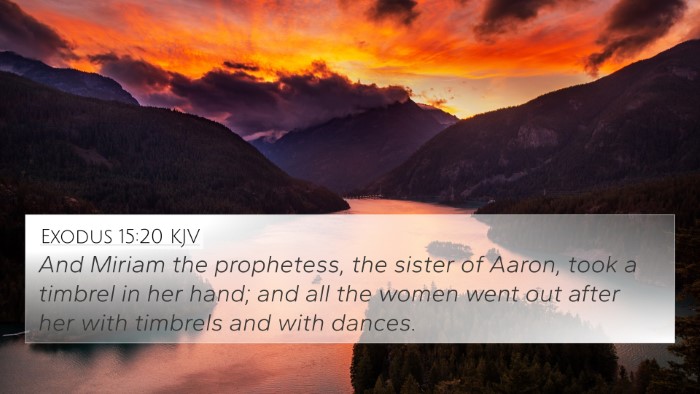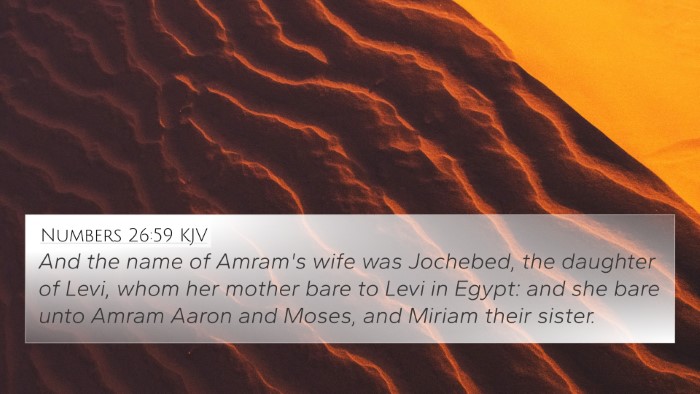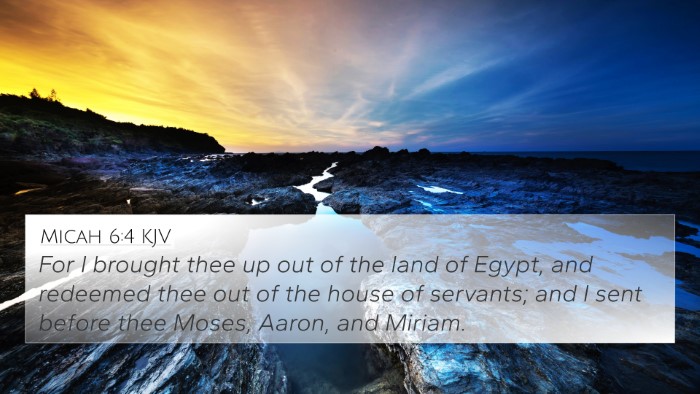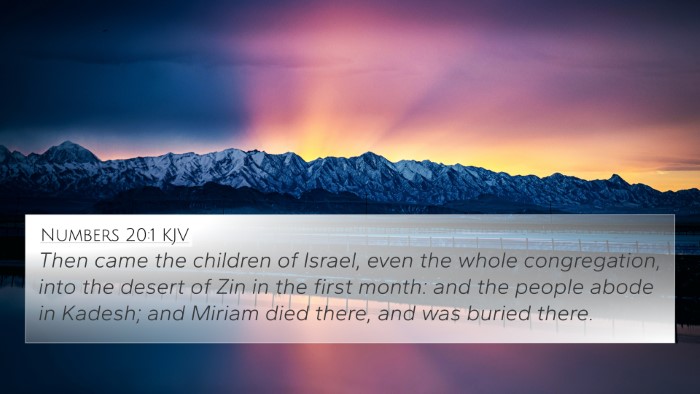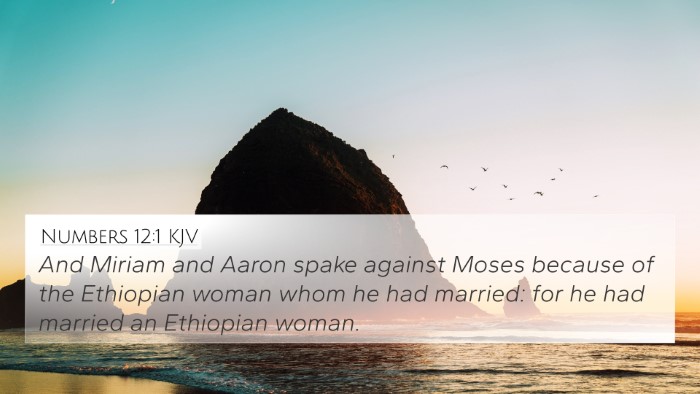Exodus 2:4 - Summary and Interpretation
Exodus 2:4 states: "And his sister stood afar off, to wit what would be done to him." This verse captures a significant moment in the early life of Moses, highlighting the protective instincts of his family and setting the stage for God's plan for his life.
Meaning and Context
The events surrounding Exodus 2:4 occur during a tumultuous time for the Israelites in Egypt. Pharaoh's decree to kill all Hebrew male infants forced Moses' mother (Jochebed) to take drastic measures to save him. By placing Moses in a basket and setting him among the reeds by the riverbank, she sought to protect him from destruction. The role of his sister, Miriam, is pivotal in this account.
Insights from Public Domain Commentaries
-
Matthew Henry:
Henry points out that the actions of Miriam demonstrate the care and wisdom of a sister who is both faithful and brave. She positions herself strategically to observe what would happen to Moses, reflecting the anxiety and hope of a mother and sibling during desperate circumstances.
-
Albert Barnes:
Barnes emphasizes the covert nature of Jochebed's actions. Her prudence led to God's providential care, as it was through this careful placement that Moses would eventually be found and adopted by Pharaoh's daughter, fulfilling God's plan for the deliverance of His people.
-
Adam Clarke:
Clarke provides a different perspective by discussing the significance of the Nile River as a place of both danger and salvation. He notes that the river, which was intended to be a conduit for death, becomes a means through which life is sustained, signifying God's overarching control over circumstances.
Cross-References and Biblical Connections
Examining Exodus 2:4 provides a rich tapestry of connections throughout the Bible. Here are notable cross-references that further illuminate this verse:
- Hebrews 11:23: Highlights the faith of Moses' parents in refusing to conform to Pharaoh's decree.
- Exodus 1:22: Details Pharaoh’s command that every Hebrew boy be cast into the Nile.
- Acts 7:20-22: Refers to Moses' upbringing in Pharaoh's household and God’s plan for him as a deliverer.
- Deuteronomy 34:10-12: Acknowledges Moses as a prophet and leader chosen by God, stemming from the events in Exodus.
- Isaiah 43:2: Reinforces God’s protection and presence with His people, similar to how Miriam was present for Moses.
- Matthew 2:13-15: The story parallels in the New Testament with Joseph protecting Jesus from King Herod, showing God’s repeated preservation of His chosen ones.
- Luke 1:76-79: Functionally connects to the prophetic mission of John the Baptist, further signifying God’s plan for deliverance.
Thematic Connections
The themes presented in Exodus 2:4 can be seen echoed throughout the scriptures:
- Divine Protection: The protective nature of God over His chosen individuals is a recurring theme.
- Faith in Adversity: Similar acts of faith are observed throughout the lives of various Biblical figures in dire circumstances.
- God’s Sovereign Plans: The notion that God can work through seemingly hopeless situations is a significant theme in Biblical narratives.
- The Role of Women in Salvation History: Women like Jochebed and Miriam are crucial to God’s plans, reflecting the importance of familial and communal support.
Conclusion
In summary, Exodus 2:4 serves not only as a narrative account of Moses' early life but as a testament to faith, providence, and God's overarching purpose. Cross-referencing this verse reveals a complex web of relationships within the Biblical narrative, encouraging readers to explore the connections between Scripture. Understanding these links can enhance one’s study of the Bible and deepen the insight into God’s work throughout history.
Further Study and Reflection
The exploration of Exodus 2:4 invites believers to consider how God may be at work in their own lives, particularly in times of difficulty. The protective nature of family relationships and the observance of providential actions can provide comfort and encouragement.
Additional Study Tools
- Consider using a Bible concordance to explore additional verses relating to Moses and themes of protection.
- Engage a Bible cross-reference guide for deeper insights into how various verses interlink.
- Utilize a cross-reference Bible study method to draw parallels and contrasts between different accounts of God’s deliverance.
